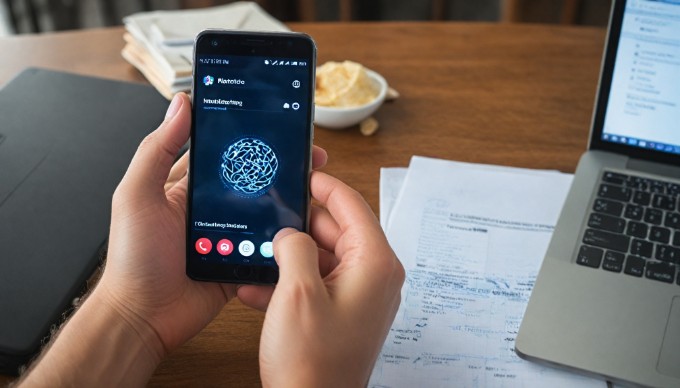What is mobile app testing and why is it important
Introduction to mobile app testing
In today’s fast-paced digital world, understanding what mobile app testing is can make a significant difference in the app development journey. Mobile app testing involves evaluating applications for functionality, usability, and consistency across various devices and platforms. This crucial phase ensures that apps meet user expectations and function seamlessly under different conditions, safeguarding the app’s reputation and success in a competitive market. By identifying and fixing potential issues before launch, mobile app testing enhances user satisfaction and boosts app adoption. Dive into our comprehensive guide to explore the key strategies and methodologies that define effective mobile app testing and learn how it can propel your app to success.

Key types of mobile app testing
Grasping the key types of mobile app testing is essential for delivering a seamless user experience and robust application performance. Each testing type focuses on different aspects of the app, helping to identify and rectify potential issues before the app reaches the end user.
Functional testing is the backbone of mobile app testing. It ensures that the app’s features and functionalities work as intended. Testers verify that all user interactions, like button clicks and data input, yield the expected results. This testing helps ensure that the app meets its requirements and functions correctly across various scenarios.
Usability testing hones in on the user experience. It evaluates how intuitive and easy the app is to use. Testers observe real users as they navigate the app to identify any areas of confusion or difficulty. The goal is to enhance user satisfaction by making the app more accessible and user-friendly.
Performance testing assesses the app’s responsiveness, speed, and stability under different conditions. This includes:
- Load testing to determine how the app behaves under heavy usage
- Stress testing to identify the app’s breaking point
- Endurance testing to check how the app performs over extended periods
Security testing protects user data and prevents unauthorized access. It involves identifying vulnerabilities and ensuring that the app complies with industry security standards. Key aspects include:
- Authentication and authorization checks
- Data encryption verification
- Security audit trails
Compatibility testing ensures the app works seamlessly across a variety of devices, operating systems, and network environments. This involves:
- Testing on different mobile devices and screen sizes
- Verifying functionality on various operating systems such as iOS and Android
- Ensuring compatibility with different network types, like Wi-Fi and cellular
By incorporating these key types of mobile app testing, developers can deliver a high-quality product that meets user expectations and performs reliably across different environments.
Expert Mobile app design, development, and support. Book a call
The mobile app testing process
Understanding the mobile app testing process is crucial for delivering a high-quality application. This process ensures that the app functions as intended across different devices and operating systems. Here’s a breakdown of the essential stages involved:
Test planning and strategy
The first step in mobile app testing involves detailed planning and strategy formulation. This stage sets the foundation for the entire testing process. Key considerations include identifying the target devices and operating systems, defining the scope of testing, and determining the resources and timelines. A well-structured test plan ensures that all aspects of the app are thoroughly evaluated.
Test case design
After planning, the next step is designing test cases. These are specific scenarios that testers will execute to validate the app’s functionality. Test case design should cover a wide range of possibilities, including:
- User interface testing to ensure the app’s design is intuitive and user-friendly
- Functional testing to verify that the app performs its intended tasks
- Performance testing to check the app’s speed and responsiveness
- Security testing to protect user data and prevent unauthorized access
- Compatibility testing across different devices and operating systems
Test execution
Once the test cases are ready, the team proceeds with test execution. This involves running the test cases on the selected devices and environments. During this phase, testers actively interact with the app to identify any issues or inconsistencies. The goal is to ensure that the app works seamlessly under various conditions.
Bug tracking and reporting
Identifying bugs is a critical part of the mobile app testing process. When testers encounter issues, they need an efficient system for tracking and reporting these bugs. This involves:
- Documenting the bug with detailed information such as steps to reproduce, screenshots, and expected vs. actual results
- Prioritizing bugs based on their impact on the app’s functionality
- Communicating findings with the development team for timely resolution
Test closure
The final stage is test closure, where the team reviews the entire testing process. This includes evaluating the test coverage, assessing the quality of the app, and ensuring that all critical bugs have been addressed. The team also compiles a test closure report that summarizes the testing activities and outcomes. This report serves as a reference for future testing cycles and helps improve the overall quality assurance process.
By following these structured steps, mobile app testing becomes a comprehensive process that ensures the app is ready for launch and capable of delivering a seamless user experience.
Tools for mobile app testing
Mobile app testing is a crucial step in ensuring the quality and performance of applications. To facilitate this process, a variety of tools are available, each offering unique features and advantages. Here’s an overview of some popular testing tools and considerations for selecting the right one for your needs.
Overview of popular testing tools
Several tools have gained popularity among developers for their effectiveness in mobile app testing. Some of the most widely used include:
- Appium: An open-source tool that supports both Android and iOS platforms. It allows for automated testing of native, hybrid, and mobile web applications.
- Espresso: Developed by Google, this tool is designed for Android apps and is known for its ease of use and integration with the Android ecosystem.
- XCUITest: Apple’s native testing framework for iOS apps, offering seamless integration with Xcode and efficient test execution.
- TestComplete: A commercial tool that supports automated testing across a range of mobile devices and platforms.
- Robot Framework: An open-source automation framework that is versatile and can be extended with libraries for mobile testing.
Comparison of manual vs automated testing tools
When choosing between manual and automated testing tools, it’s important to consider the specific needs of your project.
-
Manual testing tools
- Ideal for exploratory testing and when human judgment is critical.
- Often more time-consuming and prone to human error.
- Useful for testing user interfaces and user experience aspects.
-
Automated testing tools
- Provide faster, more efficient testing through automation scripts.
- Suitable for repetitive tasks and regression testing.
- Require initial setup and maintenance of test scripts but offer long-term time savings.
Choosing the right tool for your app
Selecting the right mobile app testing tool depends on several factors:
- Platform compatibility: Ensure the tool supports the platforms your app is targeting, whether it’s Android, iOS, or both.
- Project requirements: Consider the complexity of the app and the types of tests needed. Automated tools are beneficial for large-scale projects with extensive testing needs.
- Team expertise: Assess the skill level of your team. Some tools may require a steep learning curve, while others are more user-friendly.
- Budget constraints: Evaluate the cost of the tool, including any licensing fees, and weigh it against the potential return on investment.
By carefully evaluating these factors, you can choose a tool that aligns with your app’s testing requirements and enhances the overall quality and performance of your mobile application.
Challenges in mobile app testing
Mobile app testing presents a unique set of challenges due to the diverse and ever-evolving nature of the mobile ecosystem. Understanding these challenges is crucial to ensure a high-quality user experience and seamless app performance. Here are some of the primary challenges faced during mobile app testing:
Device fragmentation is one of the most significant hurdles. With a multitude of devices available in the market, each with different screen sizes, hardware configurations, and capabilities, testing an app across all possible devices is nearly impossible. This fragmentation requires testers to select a representative sample of devices that cover a broad spectrum of the target audience.
Operating system variations add another layer of complexity. Mobile apps must be compatible with multiple versions of operating systems, such as Android and iOS, each with its own set of features, limitations, and security updates. Ensuring compatibility across all these variations can be time-consuming and requires rigorous testing.
Network conditions can greatly affect the performance and functionality of mobile apps. Apps must be tested under different network scenarios, including 3G, 4G, 5G, and Wi-Fi, as well as varying levels of network stability and speed. This ensures that the app delivers consistent performance regardless of the user’s connectivity situation.
User experience considerations are critical in mobile app testing. An app must not only function correctly but also provide an intuitive and engaging user experience. Key elements to evaluate include:
- Load times and responsiveness
- Ease of navigation and user interface design
- Accessibility features for users with disabilities
- Consistency in behavior across different devices and platforms
Addressing these challenges effectively requires a well-planned testing strategy that incorporates a mix of manual and automated testing techniques. By focusing on these areas, developers and testers can enhance the quality and reliability of mobile apps, ultimately leading to higher user satisfaction and retention.

Conclusion and future of mobile app testing
In conclusion, understanding what mobile app testing is remains crucial for ensuring the success and functionality of any mobile application in today’s tech-driven world. Throughout this article, we explored the essential components of mobile app testing, including functionality, usability, and performance testing, each playing a pivotal role in delivering a seamless user experience. We also delved into emerging trends and technologies such as AI-driven testing tools, automation, and continuous integration, which are reshaping the landscape of mobile app testing by increasing efficiency and accuracy.
As the role of mobile app testing continues to evolve, it becomes an integral part of the development lifecycle, emphasizing the need for early and continuous testing to mitigate risks and enhance app quality. The insights provided here underscore the importance of staying updated with the latest testing methodologies to maintain a competitive edge. We encourage you to further explore these trends and implement the best practices discussed, ensuring your mobile applications not only meet but exceed user expectations. By prioritizing mobile app testing, you can significantly enhance app reliability, user satisfaction, and overall success.
Expert app & backend development services
App design and backend development, new apps and support of existing apps
Learn more